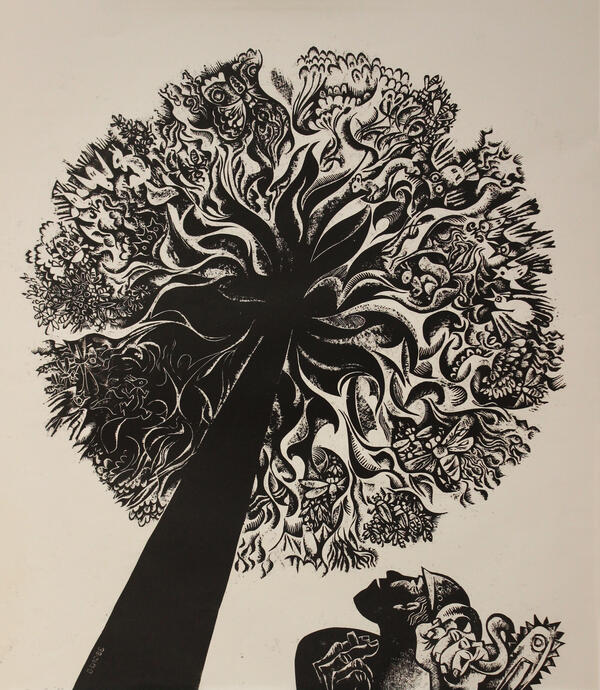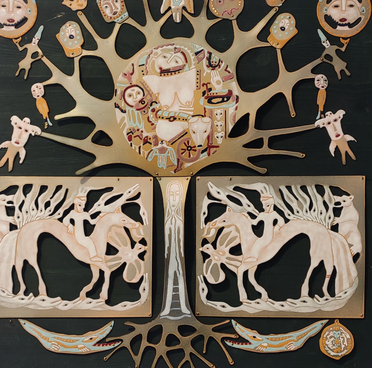The subject of ecology experienced several stages of development in Soviet art, from being completely ignored to being embraced. In the early 20th century when factories, mines, and roads were being actively constructed in the Soviet Union, the environment was perceived merely as a background to industrialization. The large-scale industrial development was still in its early stages and did not yet have a significant environmental impact.
Before the Great Patriotic War, art reflected the anthropogenic transformation of nature as industrial landscapes began to emerge with their factory buildings and pipes, and humans continued to build factories, power plants, drilling rigs, and railroads. The young Soviet state took great pride in such developments which demonstrated its strength.
The 1960s were marked by the first attempts to turn attention to the beauty of pristine nature, and a decade later it was no longer possible to ignore the problems of environmental pollution, mass deforestation, disruption of natural ecosystems, and extinction of animal species. Environmental art became an important movement that continues to gain strength every year.
Forests cover three-quarters of the Komi Republic territory. Deforestation has led to changes in forest composition, river shallowing, and soil erosion. Trees protect soil from wind and precipitation and help limit global warming. The devastation of forests has an adverse effect on air quality and the water cycle.
In his linocut “The Tree”, the artist Vyacheslav Kislov depicted a logger who gazes at a tree before cutting it down. The title of the print is symbolic: it refers to the tree of life, the mythological connection between the upper world and the underworld, the tree of the knowledge of good and evil, the genealogy tree, and the human race.
There is no tragedy or pessimism in Kislov’s work — the artist raises awareness of genuine problems with subtle irony and fascinating images. The man depicted in this print seems to have come to his senses and to have started thinking about his attitude to nature and the possibility of a harmonious co-existence. Vyacheslav Kislov has always been close to nature: as a young man, he often went out hunting and lived in a cabin in the taiga for weeks. According to the artist, nature has always been a great source of inspiration for him.
Vyacheslav Kislov is one of the most prominent contemporary artists of the Komi Republic. He is known for his drawings, paintings, statues, caricatures, and works of applied art such as pottery, tapestries, and products woven of willow and birch bark.


